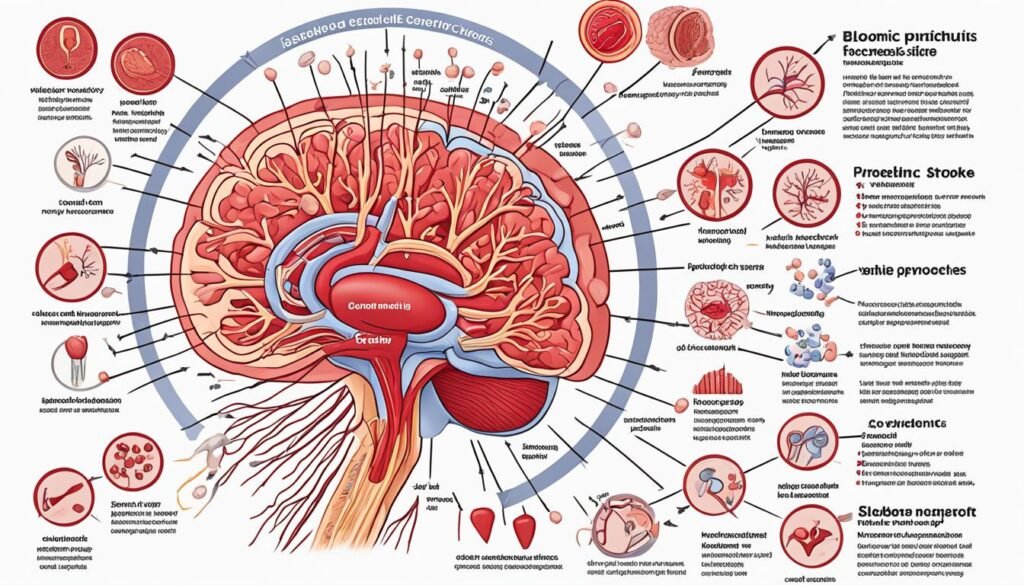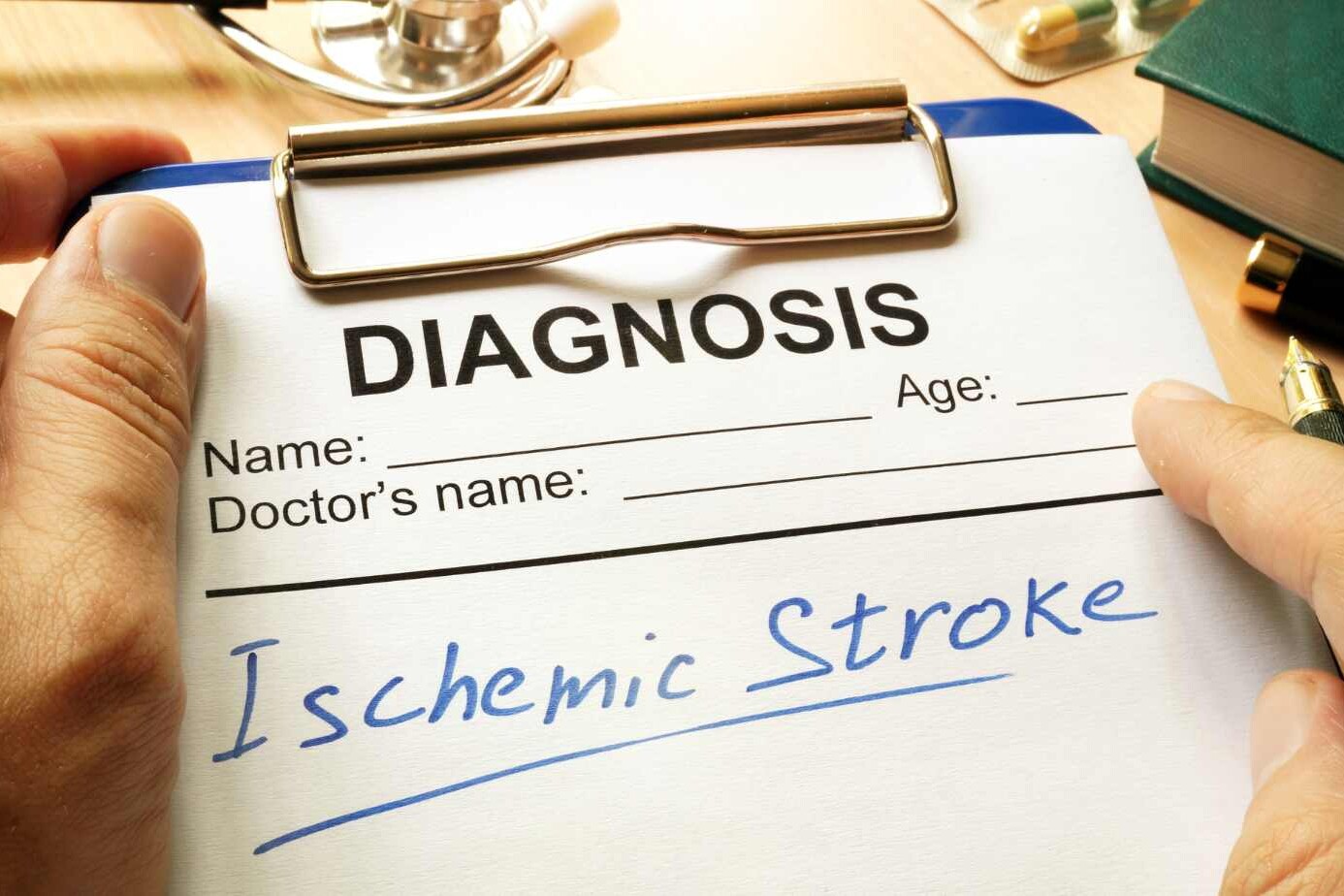Acute ischemic stroke (AIS) is a severe illness. It can cause serious disability and has a high risk of death. Despite the danger, we have made great progress in treating ischemic stroke.
In 2018, the American Heart Association/American Stroke Association (AHA/ASA) shared new ischemic stroke management guidelines. These new guidelines replaced the ones from 2013. They include updates as recent as 2019.
The guidelines focus on many vital areas. They talk about imaging assessment, treatment outside the usual time limit, and new drugs. They also discuss thrombolysis for strokes with unknown start times, and dual antiplatelet therapy for mild strokes.
Their goal is to speed up the time it takes to start treatment, and avoid any treatment delays. They offer a clear path for healthcare workers to follow. This makes sure there’s no confusion or disagreements in how they treat patients.
For example, the guidelines also suggest using mechanical thrombectomy for certain patients. This is particularly helpful for people who are 6 to 24 hours past their stroke. The advice comes from looking at the results of the DAWN and DEFUSE 3 trials.
Overall, the guidelines stress the importance of quickly diagnosing and treating ischemic stroke. They aim to give patients the best chance at recovery.
Table of Contents
ToggleUnderstanding Ischemic Stroke
Ischemic stroke is the most common type and occurs when a blood vessel is blocked. This results in no blood reaching a part of the brain. Causes are blood clots in the brain (thrombotic stroke) or elsewhere in the body, which break off and go to the brain (embolic stroke).
Knowing the causes and symptoms is very important for quick action. These steps are key for dealing with this serious health issue.
Causes of Ischemic Stroke
The leading causes of ischemic stroke are clots in the brain or those that move to the brain from other parts of the body. Some key risks are atherosclerosis, atrial fibrillation, and high blood pressure.
Other risks include high cholesterol, diabetes, smoking, not being active, and eating poorly. These factors can contribute to having a stroke.
Symptoms of Ischemic Stroke
Ischemic stroke symptoms appear suddenly and may show as numbness or weakness on one side. You might have trouble speaking or understanding speech. Vision issues, dizziness, and a bad headache are also symptoms.
Knowing these signs and getting help fast is crucial. It makes a big difference in how well someone with a stroke can recover.

Prompt Diagnosis and Imaging
Getting a quick look at the brain and blood vessels is key to treating an ischemic stroke. Doctors often start with a non-contrast CT scan. This type of scan was used in important studies that support using IV thrombolysis.
But, in some cases, doctors might also suggest more detailed scans. These can include CT angiography, CT perfusion, and MRI with diffusion-weighted imaging. They’re more for patients who might get endovascular thrombectomy.
Brain Imaging Techniques
These advanced techniques help doctors figure out where and to what degree a blood vessel is blocked. They can also show which parts of the brain might still be saved.
CT imaging can be quicker and more available than MRI. This is why they are often used first for people with an ischemic stroke.
Vascular Imaging for Stroke
For strokes, looking at the blood vessels is very important. CT angiography helps check the blood vessels of the brain. It also guides what kind of treatment a patient might need.
This scan can show where a blockage is and how big it is. Knowing this helps pick the right people for endovascular thrombectomy. This is a great treatment for certain types of strokes.
Intravenous Thrombolysis
Intravenous (IV) thrombolysis with alteplase is a key treatment for some stroke patients. It works for those with a certain type of stroke, within 4.5 hours from when symptoms show. Recently, more patients have become eligible, like those over 80 and with less severe symptoms.
Eligibility Criteria for IV Thrombolysis
Doctors don’t have to wait for all test results before starting this treatment, to save time. Even if a patient can’t take the usual tests, if their stroke could be very serious, they should get IV thrombolysis. But, doctors need to look at the risks and benefits very closely.
Time Window for IV Thrombolysis
Now, the guidelines say tenecteplase can be used within 4.5 hours, not just alteplase. They stress starting the treatment fast, with only 30 minutes from the patient arrival to the hospital. Still, doctors need to watch for certain side effects extremely carefully.
Alteplase vs Tenecteplase
Both the drugs have been shown to be beneficial in the treatment of acute ischemic stroke. If the patient presents on time, they can be offered these drugs to help treat the blockage of blood vessels.
Ischemic stroke management guidelines
The new stroke management rules suggest using advanced brain imaging before treatment. These steps are key for doctors. They help make sure patients get the right help fast after a stroke.
Neuroimaging for Treatment Selection
If someone had a stroke during sleep or the time is unknown, a special MRI scan can be useful. It can show if they might do well with a treatment for ischemic stroke called IV thrombolysis within 4.5 hours of spotting the symptoms. This advice is from a study known as WAKE-UP. It proved that this type of scan can help decide who should get timely care.
For those whose last known healthy time was between 6 and 24 hours ago, CT perfusion or a certain MRI scan can be helpful. These tests may single out patients who could benefit from a surgery called endovascular thrombectomy. The DAWN and DEFUSE 3 trials have found that some patients can still do better even hours later with this treatment.
Endovascular Thrombectomy Recommendations
The newer stroke rules also stress the need for quick assessment and talking with stroke specialists. This is for patients who might need endovascular thrombectomy. The guidelines say such patients should have a special neck blood vessel scan right away. This is more important than checking kidney health at first to not delay this lifesaving option.
So, these guidelines highlight how crucial advanced brain scans are in treating stroke patients. They are key in deciding on different treatments, from IV drugs to possible surgeries. By acting on these proven steps, doctors can better help stroke patients and boost their chances of recovery.
Antiplatelet Therapy in Acute Stroke
The latest guidelines from the American Heart Association/American Stroke Association talk about using antiplatelet therapy in the first stages of an ischemic stroke. They suggest giving both aspirin and a P2Y12 inhibitor to people who’ve had a minor stroke or a high-risk TIA. This is when they’re not getting clot-busting medicine.
Studies have shown that using both these drugs at the start of a stroke helps people do better afterwards. But, doctors need to think about this carefully, especially if the patient is taking other blood thinners.
Using antiplatelet therapy is very important right after an ischemic stroke. The guidelines make it clear that what’s good right after the stroke might not be the best in the long run. Although aspirin and clopidogrel are helpful at the start, it’s not good to use them both later on to prevent another stroke. This is because the risk of bleeding is too high.
These new guidelines are meant to help doctors give the best care to stroke patients. They want to make sure patients get the right treatment soon after the stroke.
Stroke Care Pathways and Systems
The new guidelines say that stroke care pathways are key for timely care. They talk about using mobile stroke units. These can give quick care right where the stroke happened, before going to the hospital.
Mobile Stroke Units
Mobile stroke units are advanced ambulances. They have CT scanners and can start treatment right away with medicines like thrombolytics. This fast care can make a big difference in how well a patient recovers from a stroke.
Telestroke and Virtual Care
Not everywhere can have a stroke expert on site. That’s why the guidelines suggest using telestroke and virtual care. These use technology to bring stroke doctors to the patient. This quick access to experts can also help improve the patient’s outcome.
Conclusion
The updated ischemic stroke management guidelines help doctors and nurses treat strokes better. They guide them in quickly diagnosing and treating the stroke. These guidelines talk about doing scans fast, using more treatments to dissolve clots, and better surgeries to remove clots.
By following these rules, medical teams can give better care. This means patients have a better chance of recovering. The new treatments and steps make sure patients get help fast, which is very important in stroke care.
The ischemic stroke management guidelines are like a handbook for healthcare workers. They help them know the best ways to help stroke patients. Following these rules can really change the lives of those affected by strokes.
FAQ
What is ischemic stroke and what causes it?
An ischemic stroke happens when a blood vessel gets blocked. It stops blood from reaching parts of the brain. The block can come from a blood clot in the brain or one that moves into the brain from elsewhere in the body.
What are the symptoms of ischemic stroke?
You may suddenly feel weak or numb on one side of your body. There could be confusion or difficulty speaking or understanding. You might also have trouble seeing, be dizzy, or have a very bad headache.
What imaging techniques are used to diagnose and manage ischemic stroke?
Doctors start with a non-contrast CT scan to check for a stroke. If needed, they may do more detailed scans like CT angiography, CT perfusion, or an MRI. These help decide on the best treatment, especially for those who might get surgery to remove the clot.
What is intravenous (IV) thrombolysis, and what are the guidelines for its use?
IV thrombolysis uses a medicine called alteplase to dissolve a clot and improve blood flow in the brain. It can be given within 4.5 hours of symptoms starting. New guidelines allow more people, even over 80 or with mild symptoms, to use this treatment.
What are the guidelines for using advanced neuroimaging techniques to guide treatment decisions?
In some cases, like if the stroke started while sleeping or at an unknown time, a special MRI can tell if IV thrombolysis might help even after 4.5 hours. For others, between 6 to 24 hours without stroke treatment, a CT perfusion or MRI can show if surgery to remove the clot is an option.
What are the guidelines for the use of antiplatelet therapy in the acute management of ischemic stroke?
If surgery to remove the clot is not an option, but it’s a high-risk or minor stroke, the rules advise using two types of antiplatelet medications together. This helps improve recovery, as shown in studies.
What are the recommendations for coordinated stroke care pathways and systems?
Having a well-organized plan for stroke care is very important. This includes using special mobile units for stroke and telemedicine. These help get stroke experts’ advice quickly and start treatments faster.
Source Links
- https://www.ncbi.nlm.nih.gov/pmc/articles/PMC7532245/
- https://emedicine.medscape.com/article/1916852-guidelines
- https://www.ncbi.nlm.nih.gov/books/NBK499997/
- https://www.acc.org/Latest-in-Cardiology/ten-points-to-remember/2019/11/06/15/31/Guidelines-for-the-Early-Management-of-AIS
- https://www.ncbi.nlm.nih.gov/pmc/articles/PMC5898964/
- https://www.ncbi.nlm.nih.gov/pmc/articles/PMC7577107/
- https://www.uptodate.com/contents/image?imageKey=NEURO/71462
- https://www.ncbi.nlm.nih.gov/pmc/articles/PMC6923159/
- https://www.uptodate.com/contents/intravenous-thrombolytic-therapy-for-acute-ischemic-stroke-therapeutic-use
- https://www.stroke.org/-/media/Stroke-Files/Ischemic-Stroke-Professional-Materials/AIS-Toolkit/Guidelines-for-Mangaging-Patients-with-AIS-2019-Update-to-2018-Guidelines.pdf
- https://www.uptodate.com/contents/long-term-antithrombotic-therapy-for-the-secondary-prevention-of-ischemic-stroke
- https://emedicine.medscape.com/article/1916852-treatment
- https://www.ncbi.nlm.nih.gov/pmc/articles/PMC9393649/
- https://www.ncbi.nlm.nih.gov/pmc/articles/PMC6423914/
- https://www.ncbi.nlm.nih.gov/pmc/articles/PMC6707502/
About The Author

This article is medically reviewed by Dr. Chandril Chugh, Board-Certified Neurologist, providing expert insights and reliable health information.
Dr. Chandril Chugh is a U.S.-trained neurologist with over a decade of experience. Known for his compassionate care, he specializes in treating neurological conditions such as migraines, epilepsy, and Parkinson’s disease. Dr. Chugh is highly regarded for his patient-centered approach and dedication to providing personalized care.
→ Book a consultation to discover which remedies suit your needs best.




